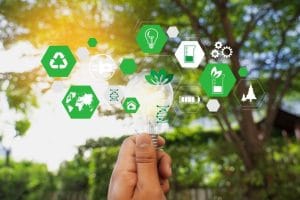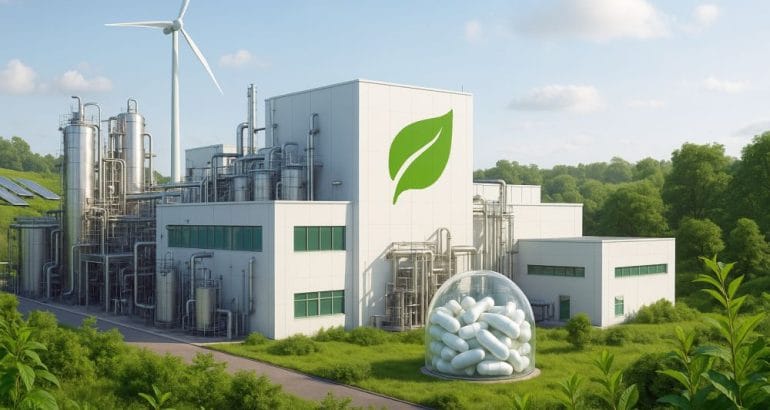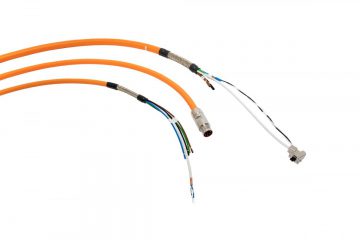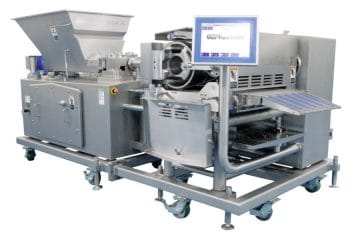by N. S.
To explore this topic, which involves companies from the smallest to the largest, we met Giancarlo Scaturchio, Customer Sustainability Global Partnership Lead at Rockwell Automation. In this context, a company like Rockwell Automation can support businesses on the journey toward improving corporate sustainability. His account reveals a step-by-step approach: you start with measurement, structure reporting, and accompany the company along the improvement path.
In larger organizations, the push comes from regulatory compliance, the attention of the Board of Directors (BoD), and investors. Sustainability is also an indicator of financial solidity; in fact, economic and ethical objectives go hand in hand. Energy and production efficiency improve the bottom line and reduce the impact on the planet. Large enterprises set the standard and create an avalanche effect that involves suppliers, customers, and the entire value chain.
Towards sustainability with an expert guide who knows the way

Large companies are generating an “ecosystem effect” that involves the entire supply chain. Whereas European compliance previously concerned mostly large and listed companies, today smaller organizations, too pushed by customers and suppliers, are taking their first steps. You don’t need a complete report right away: what is decisive is disclosure, that is the structured and verifiable reporting of environmental, social, and governance ESG (Environmental, Social, Governance) information.
Meanwhile, compliance is the set of rules, processes, and controls that ensure adherence to obligations and voluntary commitments toward environmental sustainability. The first communicates clearly. The second ensures that what is communicated is compliant and traceable.
“Rockwell supports companies as a ‘travel companion’ from the very first snapshot, which measures the starting point with high-quality, traceable, and verifiable data,” explains Giancarlo Scaturchio. “This initial check answers two key questions: How sustainable are we today? What actions are needed to improve our position and strengthen our credibility on the market?”
The roadmap starts from data and involves the entire supply chain
“We start from data with an initial assessment, that is, a snapshot of the situation. From this basis we can evaluate and set objectives, identifying priority projects to reach the required target. It does not always make sense to aim straight for the sustainability report: it is often more effective to proceed through intermediate steps on efficiency, quality, and traceability. The method is stable: assessment, gap analysis, selection of projects based on impact and costs. Then we proceed in phases. Sustainability is a strategic direction, not an administrative goal. Being sustainable does not mean ticking a box, but embarking on a conscious and transformative journey,” Scaturchio stresses.
What activities are planned in the initial phase?
The data foundation is built, information quality is verified, and the reporting model is set up. A gap analysis is performed against the objective under review, whether a KPI or a regulation, for example the (Global Reporting Initiative (GRI) and the European Sustainability Reporting Standards (ESRS), as well as against the expectations of investors and customers on Environmental, Social, Governance (ESG) factors.
How are emissions and indicators managed?
For the analysis of Scope 1, 2, and 3 emissions, the GHG Protocol is the most widely used global standard, but there are also alternative and/or complementary approaches such as ISO 14064, SBTi, and CDP, useful for reduction targets, certifications, or advanced reporting. A series of Key Performance Indicators (KPI) is defined in alignment with GRI and ESRS.
The importance of the supply chain, the Sustainability Supplier Day
“Sustainability is not only about the lead company: suppliers and partners also come into play. For the supply chain, large enterprises organize so-called Sustainability Supplier Days (days dedicated to suppliers on sustainability) to share their roadmap and align expectations and objectives,” continues Giancarlo Scaturchio. “The lead company’s sustainability does not hold if suppliers lag behind: it is necessary to verify the feasibility of the roadmap, achievable only if built on a shared path, supported by technical skills and accessible resources across the entire supply chain.”
Rockwell tools to achieve measurable sustainability results
“All our technologies contribute to the objective: measuring consumption, automating processes, improving operational efficiency, and using data to reduce waste and increase productivity. This is Rockwell’s DNA, from advanced process control to the optimization of industrial lines. Alongside the complete portfolio, we have specific ‘ready-to-use’ solutions dedicated to energy efficiency. A typical case: replacing fixed-speed motor operation with variable-speed drives, adjusting motor rpm to the process’s real needs. Today we integrate these skills into sustainability packages: you start from measurement, intervene on the hardware, and complete with digital. In this way you obtain rapid, measurable results that are easily scalable across the entire production.”
Change the paradigm: innovation is not only technology
Sustainability is built on details. Innovation accelerates the journey along this path, but often the first step is to eliminate obvious waste of energy and water with simple actions. “You start from data to identify deviations. You intervene where the impact is highest. Cycle calibration and standardization of practices immediately improve stability and consumption. Innovation is a paradigm shift,” Scaturchio explains, “new technologies are not the only thing at stake. The right technology is the one that makes results measurable over time. This is why indicators (KPI), targets, and periodic verifications are defined. Sustainability is a transformation of the way of doing business, which necessarily questions the status quo in order to optimize the use of virgin raw materials, minimize water and energy consumption, and reduce emissions, waste, and scrap in general.”
Emission reduction: the categories of greenhouse gases

In emissions analysis, you proceed step by step, gradually expanding the scope from direct to indirect emissions. Climate-altering emissions concerning greenhouse gases for companies and organizations (GHG, Greenhouse Gas Protocol) are divided into the categories:
- Scope 1 (direct emissions): these are emissions generated directly by the company as a result of activities and assets it owns or controls: machinery, company vehicles, heating, equipment.
- Scope 2 (indirect emissions from purchased energy): these are the emissions caused by the production of the energy that the organization purchases and consumes. For example, procuring from renewable sources or installing photovoltaic systems reduces Scope 2.
- Scope 3 (other indirect emissions along the supply chain): these are emissions not produced directly by the company but connected to the value chain: upstream (suppliers that produce goods/services used by the company) and downstream (customers that use the company’s products). They differ from Scope 2 because they include the entire ‘upstream/downstream’ beyond purchased energy.
- Scope 4 emissions, often called “avoided emissions,” represent a voluntary and still non-standardized category in carbon accounting. Unlike Scopes 1, 2, and 3 (which measure direct and indirect emissions generated by an organization), Scope 4 refers to emissions that are avoided thanks to the use of products or services that are more sustainable than conventional alternatives. Enterprise systems that aggregate multiple sites and support sustainability disclosure.
ESG disclosure to measure sustainability
When we talk about sustainability, disclosure indicates the structured and public set of qualitative and quantitative information with which a company makes its environmental, social, and governance impacts, risks, targets, and results transparent to the market and stakeholders, referred to as non-financial disclosure concerning Environmental, Social and Governance. This applies to environmental topics and social profiles, as well as the prevention of forced labor (“modern slavery”) and the control of harmful or prohibited substances in different markets. Every company is different: sustainability requires a consulting approach, not a one-size-fits-all model.
Eco-design of products, the ESPR is on the way
The acronym ESPR stands for the Ecodesign for Sustainable Products Regulation. We are talking about the European Union Regulation (2024/1781). primary legislation, that sets ecodesign requirements to make products more sustainable. While awaiting the delegated acts of secondary legislation for individual categories, it steers product sustainability on three fronts:
- Sustainable design (eco-design)
• Compliance requirements.
• Durability and reliability.
• Repairability, facilitated maintenance, and reusability.
• Improved efficiency. - Process circularity
• Less energy and resources.
• Less material scrap.
• Lower environmental impact.
• Lower product carbon footprint.
• Fewer hazardous substances. - Market transparency
- Digital Product Passport (DPP).
- Information that is available and transparent for informed purchasing decisions.
Positive effects for sustainability with the convergence of markets

In international markets, the common denominator is the growing importance of data. The critical issue remains the poor standardization of emissions calculation across the entire life cycle, – a standardized lifecycle assessment approach is necessary to compare Scope 3 emissions (Product(s) Carbon Footprint). However, for multinationals and interconnected supply chains, convergence is almost inevitable.
“Today the global landscape is uneven: rules, incentives, political priorities, and capital vary from region to region. Companies operating on multiple continents must read the context, adapt processes and reporting, and, when possible, anticipate the standards that are expected to converge in the long term,” explains Giancarlo Scaturchio.
“In the United States, the scenario is fluid. Recently there has been a paradigm shift, but it cannot be ruled out that it may change again. There has not been a collapse in demand for sustainability solutions, but greater caution in investments and strong polarization among States can be observed. Over a longer time horizon, one can imagine that more stable directions will emerge, driven by integration into global value chains.”
In the European Union, regulations are strong, stringent, and detailed. Directives and regulations—from sustainability reporting (CSRD/ESRS) to ecodesign (ESPR), make compliance with a market-access requirement. “All this has a global pull effect: those who want to sell in the EU adapt products, processes, data, and governance. The EU sets the standard not only for the strictness of the rules, but also because it provides a common language to measure and compare performance. The effect is twofold: more effort and complexity at the beginning, greater clarity and credibility in the medium term”, continues Scaturchio.
“In Asia-Pacific, incentives and policies are creating local virtuous circles. Domestic demand looks to global references and regulated markets. On the one hand, China has sent positive signals of attention; in India the sustainability problem is evident even in civil life (air, water, infrastructure), yet interest is growing in concrete solutions and actionable plans. Foreign investment and international value chains promote progressive alignment toward more stringent standards.”
“Looking ahead, differences between geographic areas will tend to narrow out of economic and industrial necessity. Globalization can produce positive effects by raising living conditions, thanks to clear standards, accessible technologies, and business practices that combine competitiveness with environmental and social protection,” concludes Giancarlo Scaturchio. “This is the real cultural paradigm shift that, starting from industry, involves people, their health, and the environment in which they live.”










